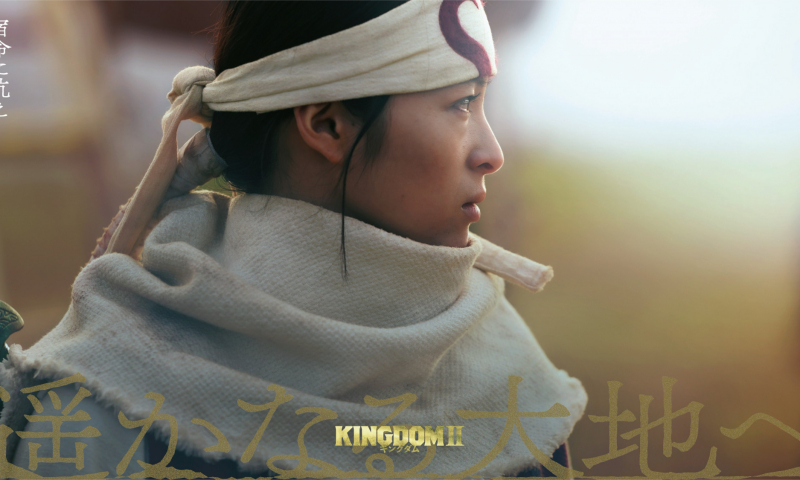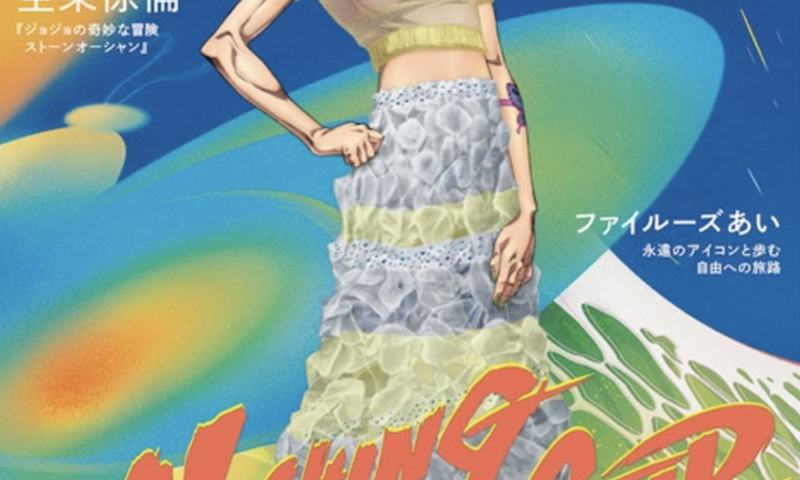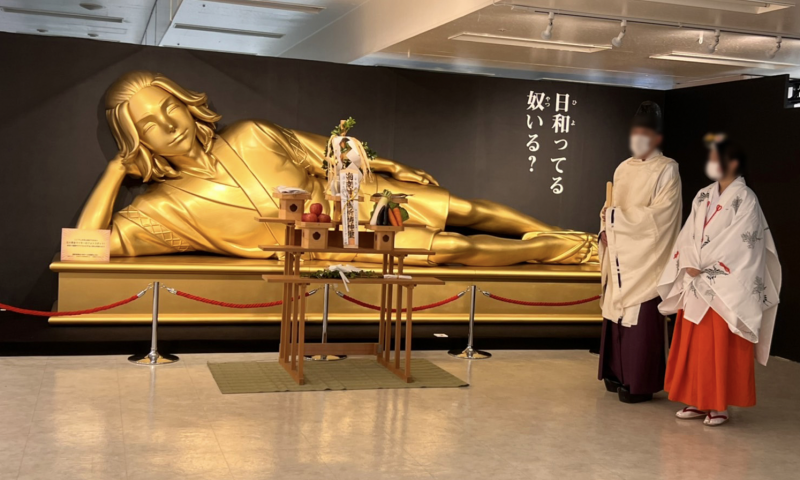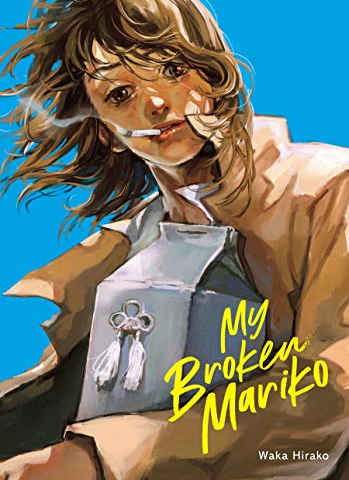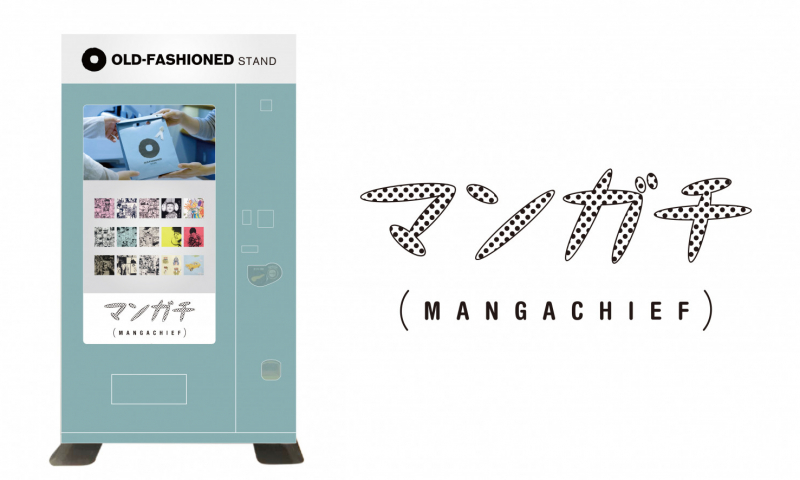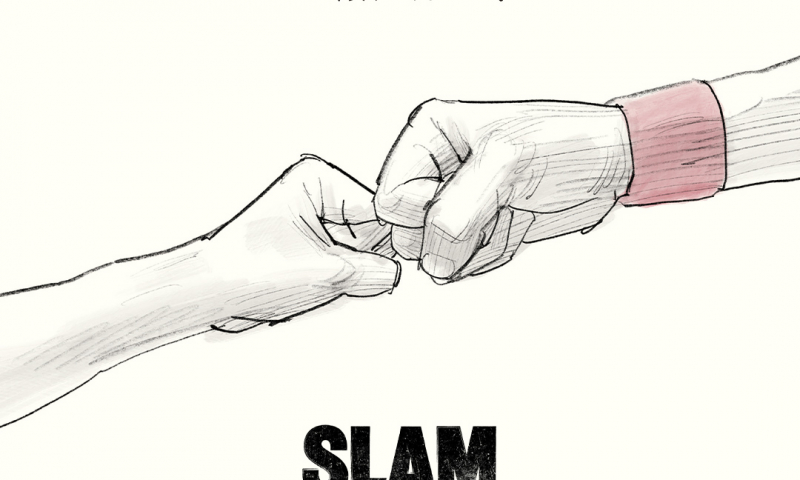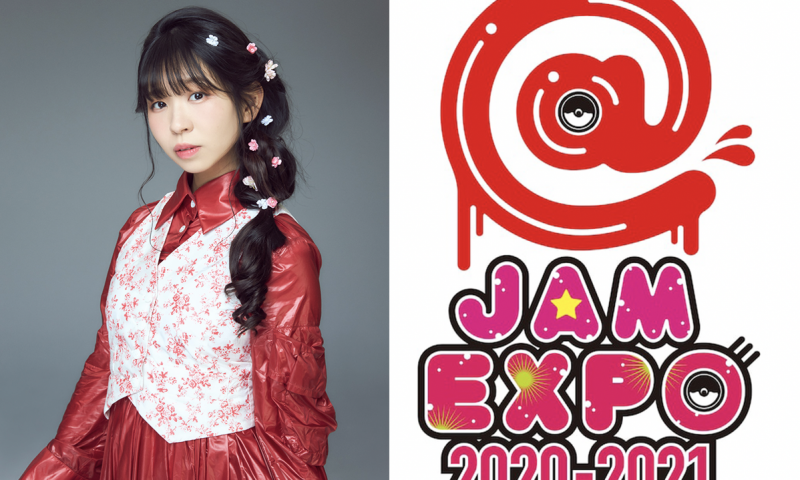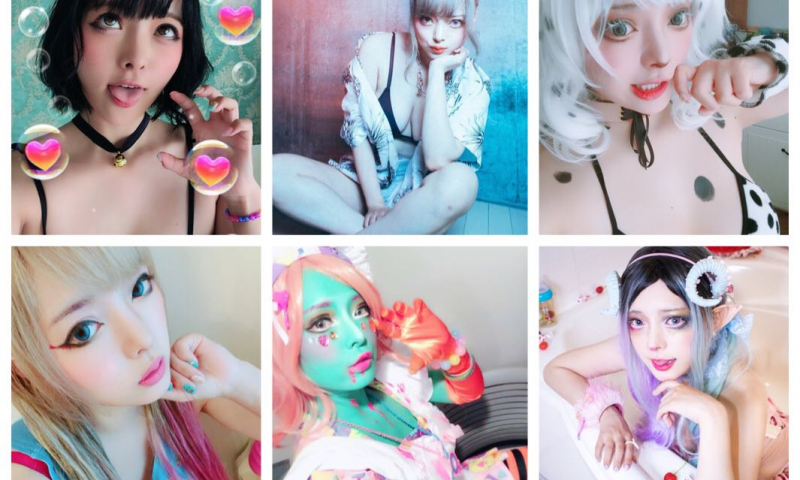
What Really Makes a Girl “Ugly”, According to Artist Hikaru Cho
アーティスト・チョーヒカルの考える「ブス」のリアル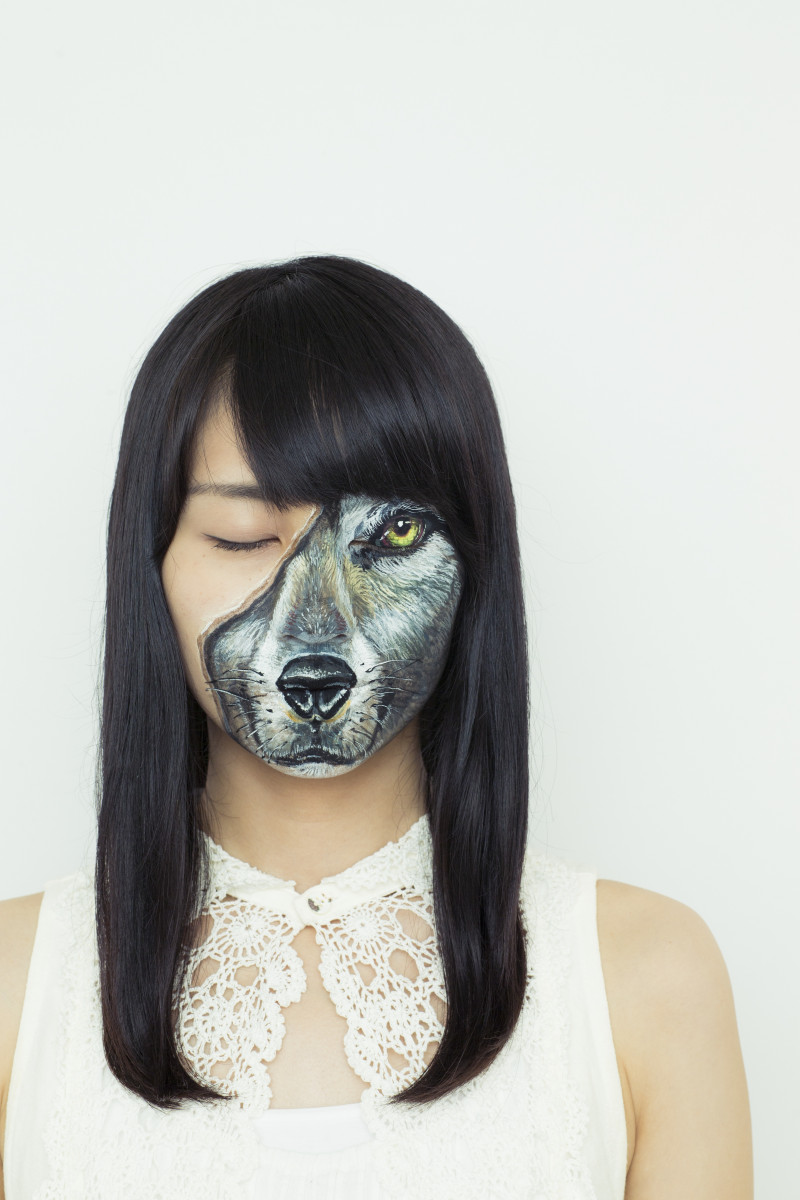
Sponsored Links
“To be a culturally refined artist”. That’s the motto of Cho Hikaru, a graduate of Musashino Art University where she majored in Visual Communication Design. If you were to trim away at her profile you’d see an artist emerge, outlined by words such as smart, stylish, gentle and reserved.
Although she works alongside a circle of familiar pop culture names, her personal role is not at the forefront of expressive art. It’s rather one of “creating pop culture” from the sidelines. We’ll get into that later, but first things first…
名前はチョーヒカル。「教養を有する美術家の養成」をモットーに掲げるプライヴェート・アートスクールの雄、武蔵野美術大学出身。専攻は視覚伝達デザイン。このようにプロフィールの一部をうまく切り取るならば、スマートでスタイリッシュ、繊細で物静かなアーティストの輪郭が浮かび上がってくる。ポップ・カルチャーの系譜に連なる活躍をしつつも、その役割はフロントでの表現活動ではなく、「ポップ・カルチャーを創出する」側であること。さてしかし、続きを見てみることにしよう。
What her work involves: Painting realistic imagery on to people’s bodies, often with the theme of eyes or other objects, clothes design including collaborative projects with fashion labels, illustration, sculpture, video production work, poster design, smart phone app illustration, as well as character product design, CD art direction among many other things. Recently it appears that she has even earned the title of essayist. This long list poses many questions but foremost may be, “Who exactly is Cho Hikaru?”
やっていること:体にリアルな目や物を描くボディペイント、衣服のデザイン、イラスト、立体、映像作品の制作からファッションブランドとのコラボレーションや、ポスター、スマートフォン向けアプリのイラストやキャラクターグッズのデザイン、CDのアートディレクターなど。最近ではエッセイストとしての肩書きも付いたらしい。これらのテクストを最後まで読むと、おそらく脳裏に浮かぶのは無数のクエスチョンマーク。「彼女は一体何者なのか?」。

The original image I painted of her is already beginning to seem wrong. She’s neither stylish, nor cool, nor even reserved, but an artist who is bold and daring, at times, smart, but also sensitive and considerate.
いや、そもそも最初に述べたイメージがすでに間違っている。彼女は決してスタイリッシュでもクールでも物静かでもなく、豪快で大胆で(時にスマート)、繊細で気を遣いがちなアーティストだ。
Barely over 24 years of age, the thing that speaks the strongest as she peers into the dazzling and radiant female portrait of Japan’s art and culture scenes, is her fascination with “beauty” and “ugliness”. Talking about it in a straightforward manner isn’t a simple task.
若干24歳にして、日本のアートシーン、カルチャーシーンにまばゆいばかりの閃光を浴びせ続ける彼女の肖像に迫ると意気込んで臨んだものの、最も力強く返ってきたものは、「美」と「醜」に対する独自のこだわりだった。やはり、一筋縄ではいかないらしい。
– At a first glance much of your work doesn’t appear to be connected, so in order to give us some clues and establish their connection, could you tell us about what it was that made you pursue art?
—脈絡なく色々な作品を作られているので、糸口や関連性を見出すために、まずはアート活動を始めたきっかけをお聞きできればと。
Hikaru Cho: When I was around the age of 18 I took the entrance exam for the Tokyo University of the Arts, and failed. And because it was so difficult for me to accept that the University wasn’t interested in someone like myself, my first thoughts were that I had to do something different. I later entered Musashino Art University where I was filled with the urge to accomplish something. I went to draw something but there was no paper in the room!
チョーヒカル:18歳くらいの時に東京藝術大学を受験して落ちてしまうんですけど、それがとても辛かったので「大学側が私のことを求めなかったのだから、別のことをしなければ」と思ったのが最初です。それで武蔵野美術大学に入るんですけど、漠然と何かをしなければと考えていて、ちょうどその時に絵を描こうとしたら部屋に紙が無かったんですね。
Before, when I was at art prep school, I’d only been drawing plaster figures or still life as my motif. As a result of this I longed to draw the human body. One day I wanted to draw an eye but there was no paper left in the room. It was too much of a pain to go out and buy some so I thought, “Maybe I can use my hand?” So I drew on my skin like that.
元々美術の予備校では、石膏像や静物ばかりを描いていたので、人体を描きたいという欲求がありました。それで紙に目を描こうとしたんですけど、部屋に無かったから買いに行くのが面倒になってしまって、「自分の手が使えるのでは? 」と思って描いてみたんです。
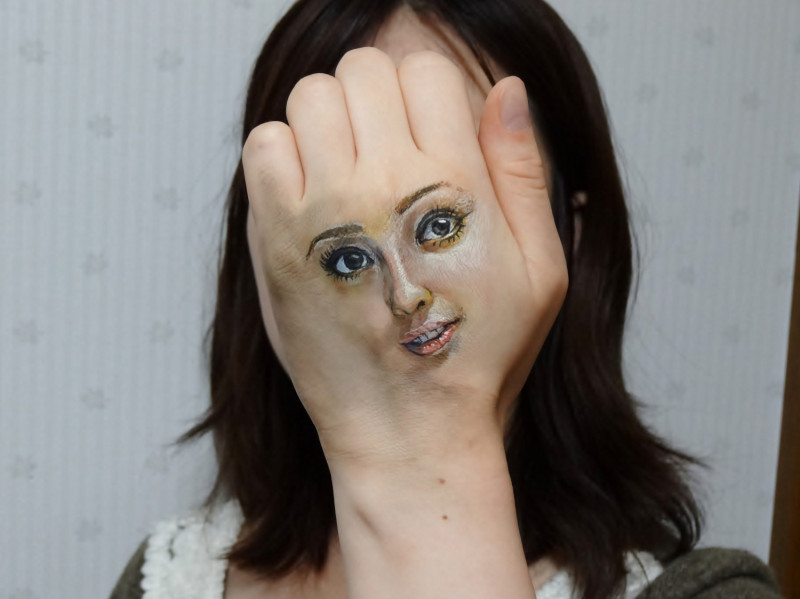
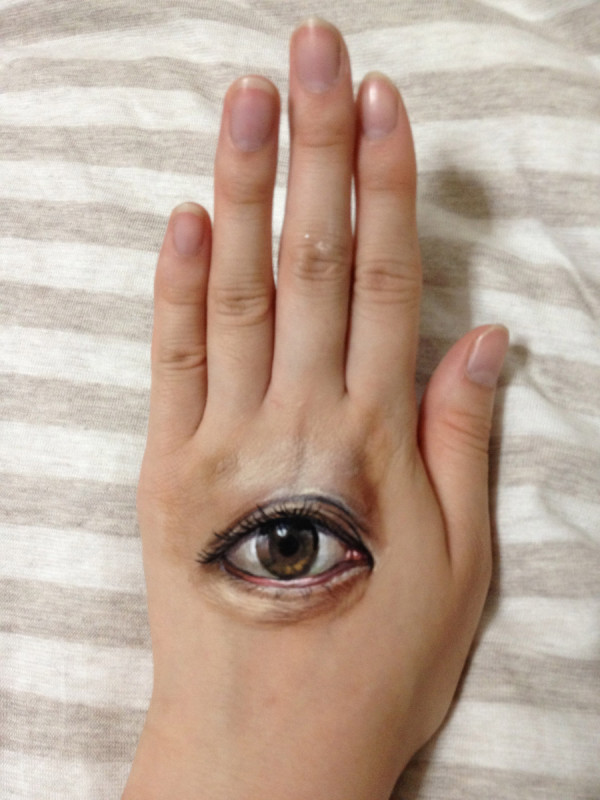
– I see, that sounds logical enough.
—なるほど、とても合理的ですね。
Hikaru Cho: The outcome was interesting, and actually the drawing itself was better than what I would have been able to do on paper. I snapped a photo and uploaded it to social media where it received a positive reaction. My first attempts at body painting started to give me the kind of approval that I was seeking for my work. I figured that there must be a need for it, so I decided to continue experimenting with it for a while.
チョーヒカル:結構面白い出来上がりで、紙に描くよりも上手く描けたんです。写真を撮ってSNSにあげても一番反応が良かった。承認欲求が一番高まっていた時に、それを満たしてくれたのがボディペイントだったんですね。世の中の求めているものはこれなのかと思いました。であれば、もうちょっと続けてやってみようかなって。
– So you continued with it throughout university?
—それから大学時代もずっと?
Hikaru Cho: Well, during my first year I often uploaded my work, but gradually I came to dislike posting my work to social media. Other images, such as a cute girl’s selfie, would get way more views and likes than something I had spent hours creating, and so, slowly, I started feeling strange about it… As a result I decided I wanted to showcase my work in a more professional way, so during my second year I created my own website and began to display my work there. I also continued to use Twitter though.
チョーヒカル:そうですね、特に大学1年生のときにたくさんアップしていたんですけど、だんだんSNSに上げるのが嫌になってきた。可愛い女の自撮りの方が、私が4時間かけて描いた絵よりも「いいね! 」がくるのを見て、だんだん違和感を覚えるようになって……。だから、ちゃんとしたところに作品として上げようと思って、2年生の時にホームページを作って、そこに上げていくようになりました。Twitterにも引き続き上げてましたけど。
– So seeking approval gradually became more difficult. Also it was just around the period was when you started appearing in media.
—承認欲求がだんだん大変なことになっていくわけですね。ちょうどその頃はメディアに出演されるようになった時期でもあります。
Hikaru Cho: My desire for approval was really strong at the time. Sometimes I would take selfies and post them; so embarrassing. Obviously its not always the case, but I think that the age of 18 or 19 is when people really seek approval, and it’s rare to get the same reaction from your circle of friends that you are able to achieve on social media platforms. At the time I was filled with the urge to become someone, so I churned out body paintings recklessly. I would invite friends over and ask them to let me paint on them.
チョーヒカル:本当に承認欲求が強くて。時々自撮りも上げてたし、お恥ずかしい。でも、みんなではないと思うけど、18歳や19歳の時って承認欲求がすごい時期だと思うんです。あまりないじゃないですか、自分の周り以外から反応が返ってくることって。それから「何者かにならなければ」という気持ちは当時の方が強かったので、本当にがむしゃらに、ハイペースに作品を作っていました。友達を家に呼んでボディペイントを描かせてもらったりして。
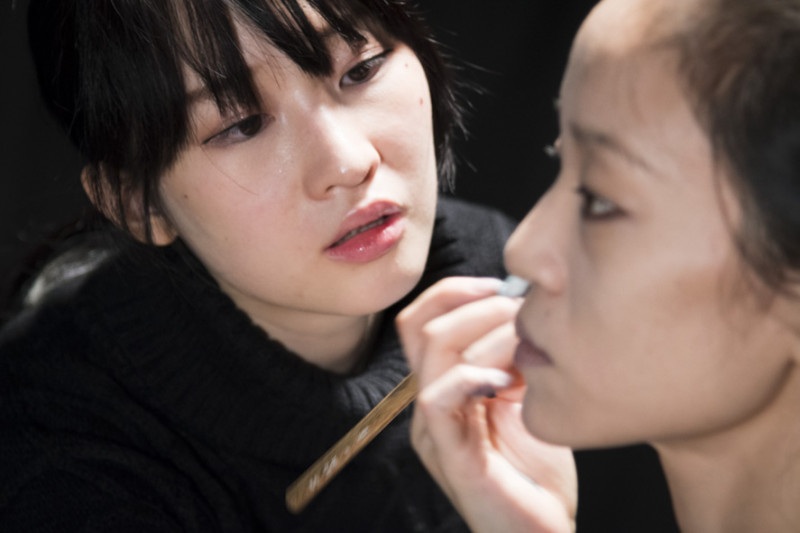
From there I gained exposure, mainly from user-generated content (UGC) sites, and then I began to get more and more offers to appear on TV programs. They would write taglines about me like, “This beautiful university girl’s paintings are amazing” and I’d think, “Who do these jerks think they are trying to stir up interest by calling me a beautiful girl?”
それからネットのまとめサイトを中心に露出するようになり、テレビ番組に呼んでもらうことも増えました。“美人すぎる女子大生アーティストの描く絵がすごい”というコピーを付けられたんですけど、「勝手に美人とか煽りやがってクソ野郎」と思いました。
– Recently your work abroad has been getting a lot of attention, too.
—最近では海外での活躍も目立ちますよね。
Hikaru Cho: I went to Finland with a poet friend of mine, we did performances involving poetry readings and live body painting. Afterwards I was invited to do a solo exhibition in Germany that got picked up by the media. After that I travelled to the Middle East where I ran a workshop for children, teaching them about hand painting.
チョーヒカル:友人の詩人とフィンランドに行って、ポエトリーリーディングとライブでのボディペイントというパフォーマンスをやったり、ドイツで個展も呼んで頂いて現地のメディアにも取りあげられて、それから……アラブに行ったときは子供向けのワークショップで、子供にハンドペイントを教えたり。
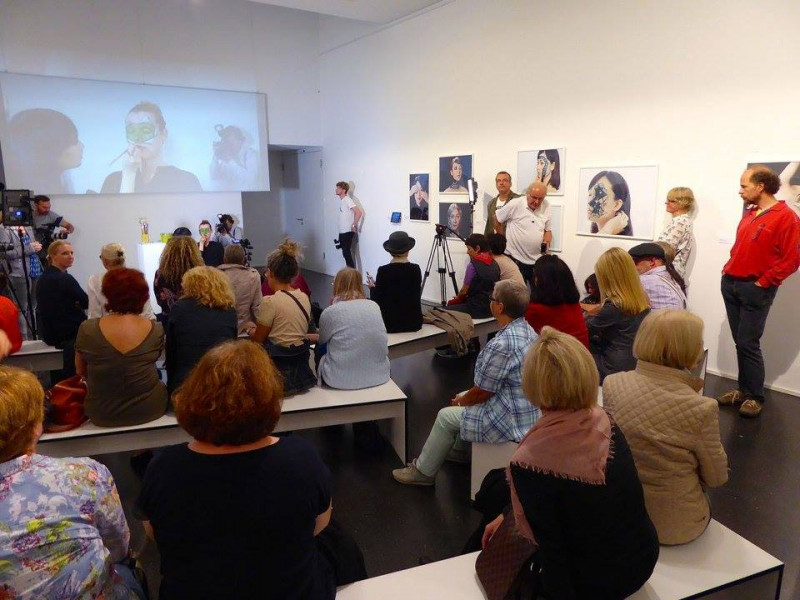
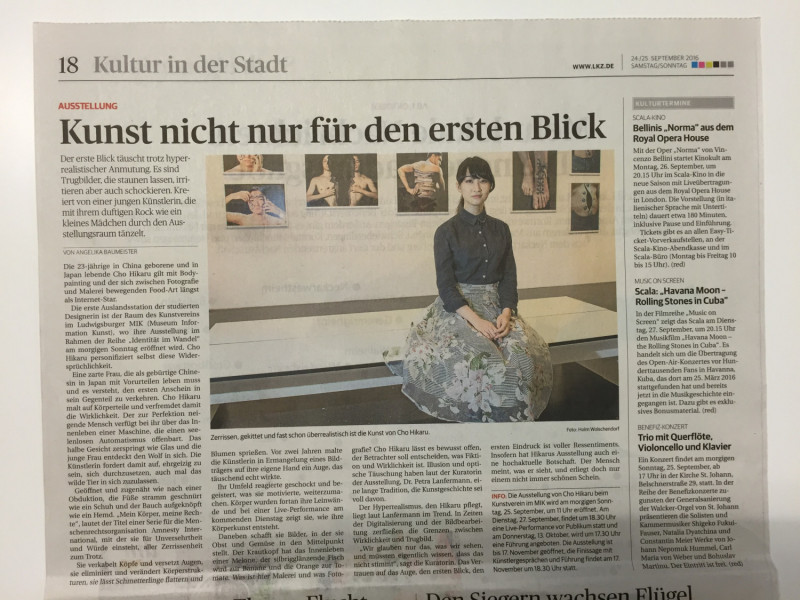
– Have you felt any differences about how your art was accepted while abroad? Compared to Japan, that is.
—海外に行ったことで、アートの受け入れられ方の分断みたいなものを感じましたか? 日本と比較して。
Hikaru Cho: In Japan it doesn’t seem like there’s much of a culture of buying art or decorating with it, right? Even if there is, instead of decorating with works by artists you like, people buy things like landscape paintings that are only made for decorating. Overseas there were many people who wanted to buy my work, so that was really surprising. Of course, there’s the fact that it’s easier to hang things up on the wall there. In Japan not only is there less space, but also many people live in rental properties that don’t allow you to hang things up.
チョーヒカル:日本にはアートを買う、あるいは飾るという文化があまり無いじゃないですか。あったとしても、好きなアーティストの作品を飾るというよりは、「飾るための絵」のように、静物画や風景画が飾られている。海外では作品を買う人が多くて、やはり驚きがありました。もちろん壁にかけやすいというのもあるんですけどね。日本はあまりスペースもない上に、賃貸に住んでいる人が多いから壁にかけちゃいけないし。
– Body painting in foreign countries is like, for example, how Indian people decorate themselves with henna, right? But I feel like in comparison you tend to paint human parts on the body more often than not. How did you come up with this idea?
—ボディペイントって諸外国だと、例えば、インドの人はヘナを使って装飾していますよね。チョーヒカルさんは身体に人間のパーツのペイントをすることが比較的多いような気がします。その着想は、どう得ているんですか?
Hikaru Cho: There are a lot of people that do body painting, but the part I enjoy is being able to create things that people haven’t seen before. In general, you’ll find many body paintings where people paint flowers and so on. For me, there’s no point in doing the same things everyone else is doing, so my body paintings use the motif of realism every time.
チョーヒカル:ボディペイントって色々な人がやっているけれど、私が好きなのは、見たことのないものを作れるところです。一般的には花とかを描くケースが多いですが、他の人と同じことをしても意味がないということを意識してやっているので、リアルな(身体についての)モチーフに毎回なるんですね。
– On the other hand, you also paint on things like bananas and oranges.
—その一方で、バナナや蜜柑など「モノ」のペインティングも行っていますよね。
Hikaru Cho: Body art also includes special makeup (movie effects etc). However, I want to differentiate my work from special makeup. So I try to avoid drawing blood or grotesque things. Also, I always try to have certain concept, and present them as an “Art work”, that’s different from special makeup.
チョーヒカル:身体に関しては、“特殊メイク”というものがあるわけです。が、私は特殊メイクをやりたいわけではないので、差別化をしたい。だから血であったり、グロテスクなものは描かないようにしています。そして、何かしらのコンセプトがあって、「ボディペイント作品」として完結するもの、と決めて作っているところが特殊メイクとは違うところです。
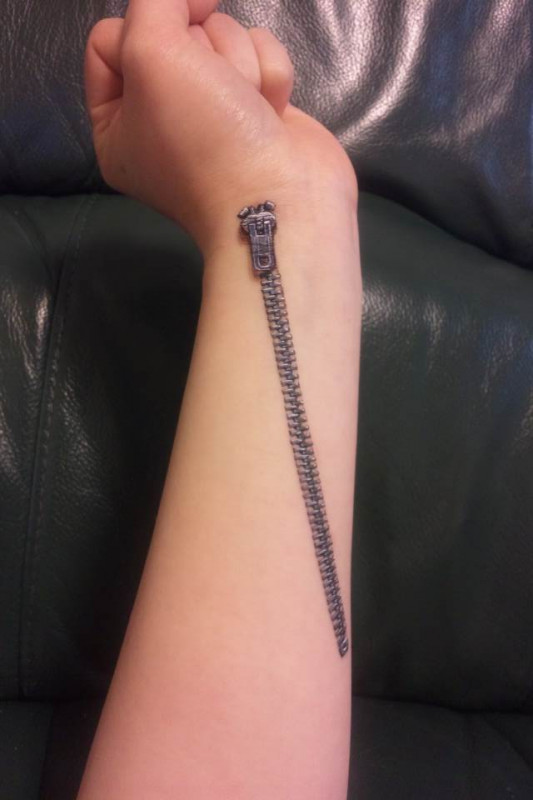
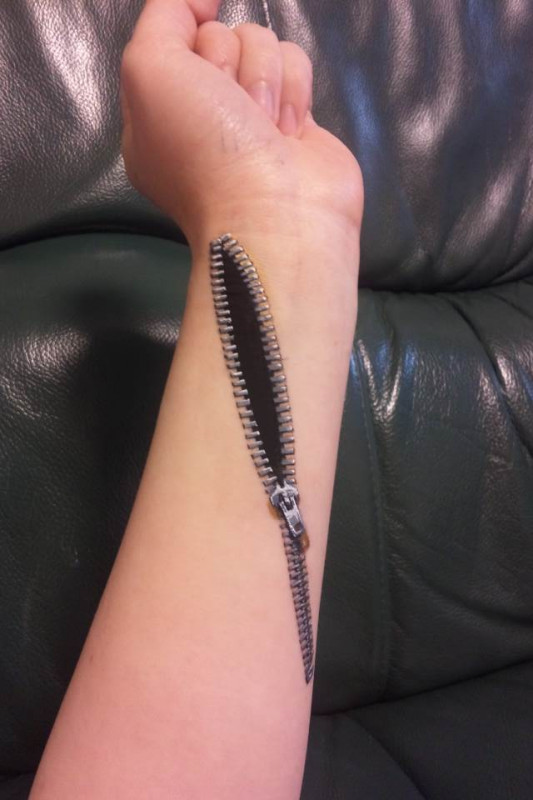
On the other hand, I also draw images of bananas, fish, and things like that. First I painted bananas on cucumbers. I got word from the Swedish Embassy that they wanted to hold a Swedish-themed art exhibition, and while I was thinking of a theme, I felt that Sweden was a country that paid a lot of attention to racial discrimination. From there I decided to make something regarding race. I thought disguising a banana as cucumber would fit the theme.
一方で、バナナや魚などにも絵を描いたりもします。最初はキュウリにバナナのペイントをしたんですよ。スウェーデン大使館から、スウェーデンをテーマにしたアート展をやりたいという話を頂いたので、テーマについて考えた時に、人種差別にすごく気を遣っている国という印象があって。それで人種についての作品を作ろうと思った時に、キュウリとバナナがフィットするなと。

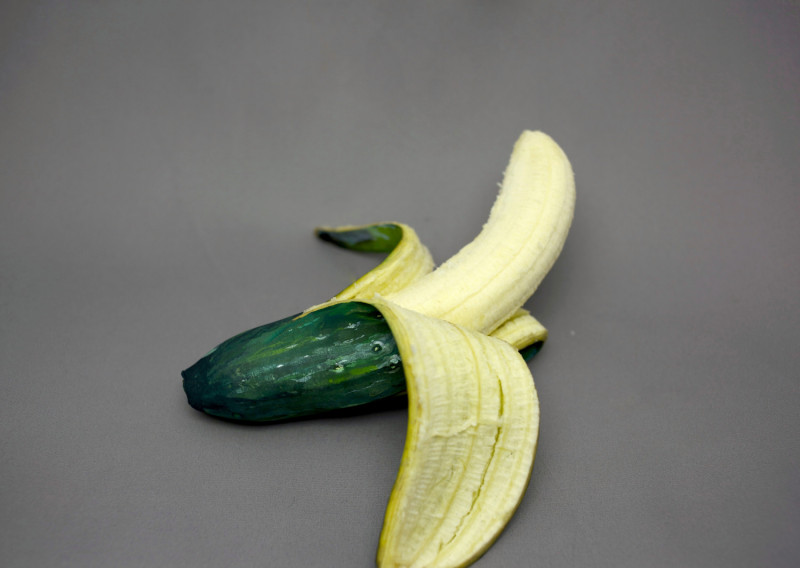
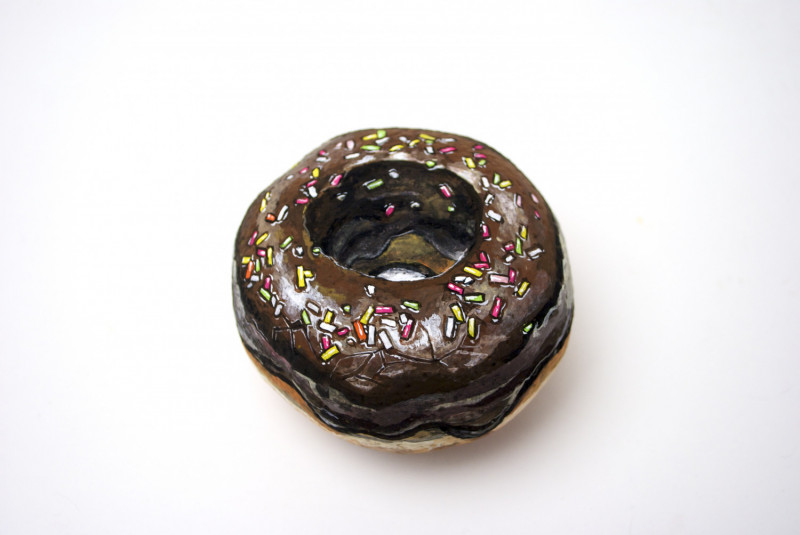
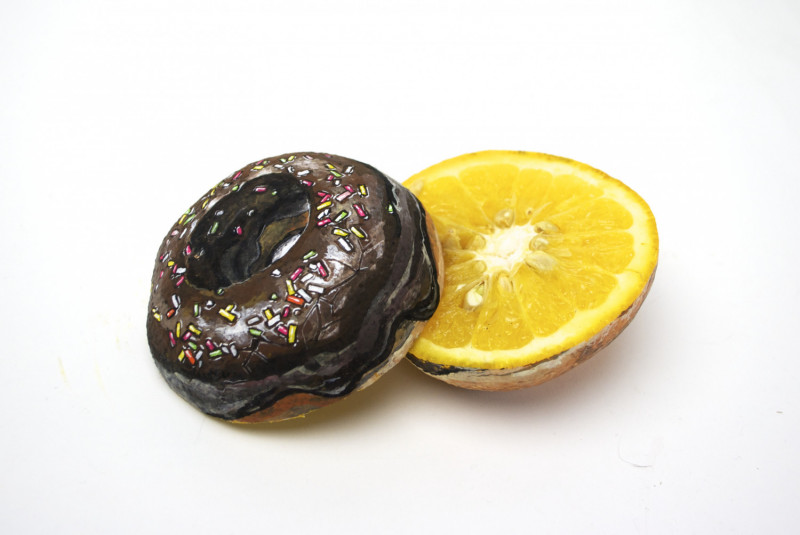
– So you come up with it while taking the concept into consideration.
—コンセプトを意識しながら考案しているんですね。
Hikaru Cho: That’s right. First I’ll have several visual ideas, and when I’ve got the concept idea, I’ll connect them in the way that ties them the most. For example, I had “banana and cucumber” or “egg and eggplant” written down on my memo pad as a visual ideas. With the previous theme of racial discrimination based on appearances I thought painting an object to be disguised as something else would fit the theme. So that’s where the idea for “cucumbanana” came from.
Because, you know, if you’re fooled by a painted object, how can you know what the person is like just based on their eye color or skin color.
チョーヒカル:そうですね。まずビジュアル案がいくつかあって、コンセプト案が出た時に一番結びつくものをくっ付けるという感じです。例えば、ビジュアル案としてメモ帳に“バナナとキュウリ”とか、“卵とナス”とかを書き留めていて、さっきの人種というテーマをもらった時に「見た目での判断が誤っていることを証明できるもの」として、バナナキュウリのような、実物と違うものがペイントしてある作品を作るといいんじゃないかと思ったんです。だって、ペイントすら見破れないなら、肌や目の色で誰かを判断することなんてできるわけないじゃないですか。
– Going back to the topic of body painting, you paint directly on the body, right? How are you able to capture the physical aspect of it and the meaningful aspect of it?
—身体へのペイントに話を戻すと、人の体に直接的に装飾をするわけですよね。そこでの身体性や、生じる意味みたいなものをどう捉えていますか?
Hikaru Cho: Well, even if I were to paint the same thing on paper that I can paint on the body, it would not create something as meaningful. I think people are able to see that it’s not merely body “decoration”, but a work of art. I believe people are able to view the body as if it were truly like that.
チョーヒカル:私が今、ボディペイントとして描いているものをそのまま紙に描いたとしてもなんの意味も生まれないんですよね。身体に描くことによって単なる“装飾”というものではなく、作品として見てもらえるところがあると思います。「本当に体にそういったものがあったら」という目で見てもらえる。
Also, I think it’s easier to make a connection with something drawn directly on the body than something on paper… I think it makes it easier to perceive the work as if it’s about the person. For instance, if a wolf were painted on a girl’s face, there is a higher chance that someone will try to discern its meaning or interpret it, instead of thinking “It’s just a wolf”. So painting on the body creates an additional meaning beyond the painting itself. Because I’m painting on something related to the viewer (the human body), people don’t feel the same distance they might from a painting. I think that’s what makes it interesting.
あと、身体に直接描いてあると、紙に描いてあるよりもつながりやすいというか……自分のこと、人間のこととして捉えやすいというのがあるなと。例えば、女の子の顔に狼があったら、それを見た時に、ただ単に「女の子の顔に狼がある」と思うのではなくて、そこから何かしら意図を汲み取ってくれる可能性が高くなり解釈してくれますよね、つまりペイントに対して、別の意味が生まれる。自分と関係があるもの(=身体)に描かれているので、ボディペイントの方が見る人との距離が近いと思うんですよね。そこが面白いなと思います。
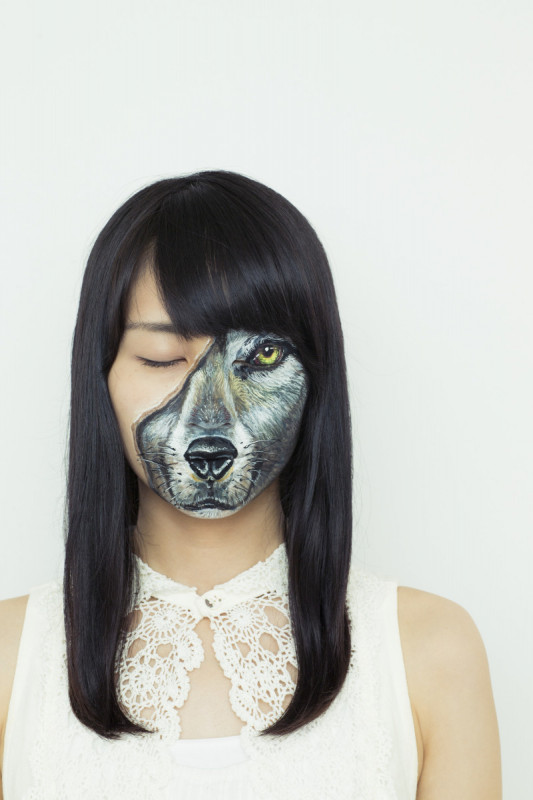
– Beyond that, I think with body painting there are many opportunities when it comes to modeling the target subject, and naturally, creating an awareness of beauty. How do you define what makes a girl pretty or ugly?
—ボディペイントをする上で対象となる人の造形など、もちろん美醜について意識する機会はとても多いと思うんですよ。チョーヒカルは「可愛いこと」「ブスであること」をどう定義しているのでしょう。
Hikaru Cho: Hmmm… When it comes to beauty, I think a pretty woman is one who is satisfied with her own looks. People who aren’t satisfied with their own looks and then become whiny or jealous because of it, are ugly. This is just my own personal view, but let’s say there’s a triangle shape, or a “pyramid of women”. At the very top would be the top 5%, beautiful women whose frames and parts fit what’s considered ‘ideal’. These are women who have been called pretty/cute since they were born, and who continue to be accepted and adored. I mean cute, not in a girly or cutesy way, but from an analytical point. I think people whose eyes are close to the center of the face, and who have a face with a roundness balanced like that of a teddy bear’s, are cute.
チョーヒカル:うーん……綺麗ごととして言うと、可愛い人は自分の顔に満足している人で、自分の顔に満足できないが故にウジウジして、人を妬んだりしているのがブス。個人的な考えなんですけど、三角形の図形があるとするじゃないですか、“女たちのピラミッド”があるとする。その三角形の一番上にいる、上位5%くらいが美人で、それは骨格やパーツ、配置を含めた理想的な造形の人たち。生まれた時から誰が見ても可愛い人、ずっと認められて愛され続けてきた美人たちです。“可愛い”というフワフワとした概念ではなくて、統計的にも目の位置が顔の真ん中に近くて、顔が丸めのテディベアみたいなバランスの顔を見ると、人間は可愛いと思うんですよ。
– So like the golden ratio.
—黄金比ってありますもんね。
Hikaru Cho: I think about 5% of girls fit that description, and then there are those that are the complete opposite.
チョーヒカル:そういう先天的に恵まれた人たちが5%だと思っていて、逆もいるわけです。
– (laughter)
—(笑)
Hikaru Cho: Those girls are the women who make-up the lowest 5% at the bottom of the pyramid. People blessed with a figure that they would find difficult to reinvent through their own efforts. People who, when you look at them have parts that are significantly above or below the average, are not those who you would say are beautiful. “Beautiful” people are basically people who are made of average parts. They may have larger eyes or something like that, but they have the perfect proportions, you know? People who are proportioned perfectly are beautiful. For example, if your nose is too big or your chin sticks out too much… anything that deviates too much from the average… It’s likely to be deemed as being ugly. If they are satisfied with that, then that’s fine though.
チョーヒカル:それが下位5%、ピラミッドの最下層です。自分の努力では再生が難しいくらいに、造形に恵まれなかった人たち。パッと見た時に、明らかに平均を大きく上回るか下回るパーツがある人って美しいとは言われないと思うんですよ。美人って、基本的に平均的なパーツですよね。目が大きいとかはあるけど、全部バランスがちょうどいいくらいでしょう? 全部ちょうどいいくらいの人が美しいんですよ。例えば、鼻がすごく大きいとか、顎がすごい出ているとか、平均と外れすぎているところがあるとブスだとみなされやすい。まあそれでも満足していたらそれでいいんですが。
– What about the other 90% then?
—残りの90%はどうなるんですか?
Hikaru Cho: Everyone else is just sort of ugly. Most people are ugly, and only about 5% are beautiful. However, those who are ugly in this 90% may be able to move upward depending on their own effort, or sometimes they may fall lower. They all fluctuate in their degree of ugliness.
チョーヒカル:残りは“まあまあ”のブスたちです。ノーマルはブスなんですよ、上位5%しか美人はいないから。でも90%のブスたちは努力次第で上位にもいけるし、下位に落ちてしまう場合もある。振れ幅があるブスたちです。でも実は、90%のグレーゾーンにいても化粧とかファッション次第で上位5%に迫ることができるんですよ。
– So where would you say you fall?
—ちなみにチョーヒカルはどこにいるんでしょう。
Hikaru Cho: I think I would fall into that 90% grey zone. So I don’t see myself as being beautiful. But actually, there are no set standards for prettiness or cuteness, so it’s difficult to judge. However, you have to set your own standards, and so in order to not get lost in a myriad of details of what constitutes as “cuteness”, I look at it from the frame or figure aspect. Since men don’t live in a world defined by “cuteness”, I don’t think they often analyze themselves, but for those of us who are the gender where it’s painful not to be cute, it’s something we always have to be constantly thinking about.
チョーヒカル:私は90%のグレーゾーンにいると思っています。だから自分が美人だとは思えない。実際、可愛さって確固たる基準がなくて判断が難しいんです。でも自分の基準はちゃんと持っておかないといけないから、私は“可愛さ”は色んな装飾とかに惑わされずに、骨格や造形で見ようと思っています。男性って“可愛い”の世界で生きていないからあまり自分のことを分析しないと思うんですけど、こっちは可愛くないということで辛い思いをする性別なので、常に考えなければいけないんですよね。
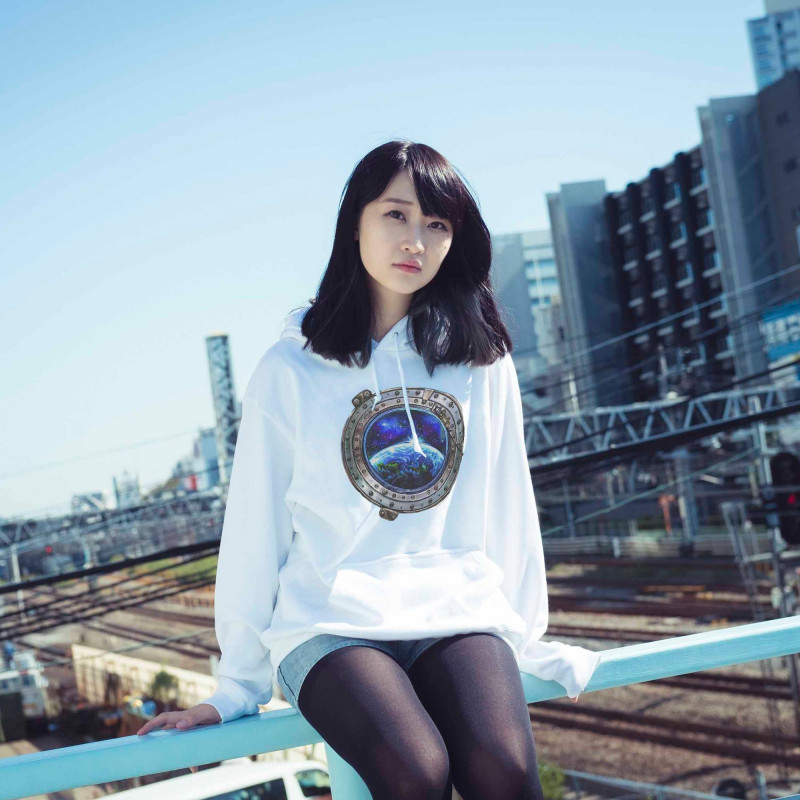
Profile
Hikaru Cho : She is a body painting artist born in Tokyo, 1993. Gaining world wide attention for her works painting bodies and objects. She has been featured on various media, and also collaborates with Samsung, Amnesty International, and Shiseido, along with her personal exhibition domestic and foreign. She also works on fashion design, illustration, 3D art, and videos. Her art book : “SUPER FLASH GIRLS Cho Senkou Girls”
チョーヒカル : 1993年東京生まれ。ボディペイントアーティスト。体や物にリアルなペイントをする作品で注目され、日本国内だけでなく海外でも話題に。多数のメディア出演に加え、SamsungやAmnesty International、資生堂など企業とのコラボレーション、国内外での個展など多岐にわたって活動。ペイントの他にも衣服のデザイン、イラスト、立体、映像作品などの制作もおこなう。著書に『SUPER FLASH GIRLS 超閃光ガールズ』がある。
Related links
Hikaru Cho Official site: http://www.hikarucho.com/
Hikaru Cho Official Twitter: https://twitter.com/soba_ba
Hikaru Cho Official Facebook: https://www.facebook.com/hikaruchoofficial/
Hikaru Cho Official Instagram: https://www.instagram.com/hikaru_cho/
Translated by Jamie Koide
Sponsored Links
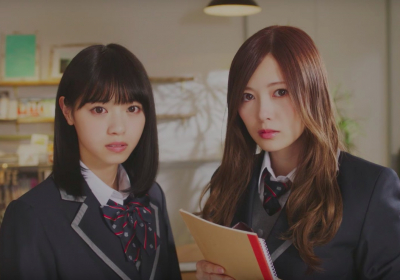
Love Triangles with Nogizaka46 Members! New TV Commericals for NOGIKOI Released

Best Place for Science Freaks! Visit “Science Bar Incubator” in Yotsuya


